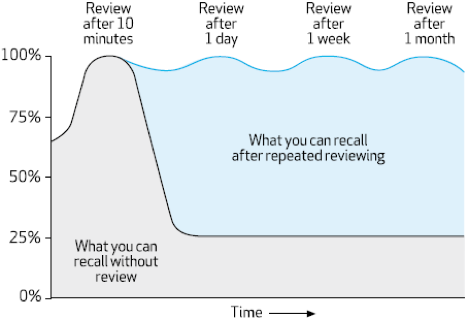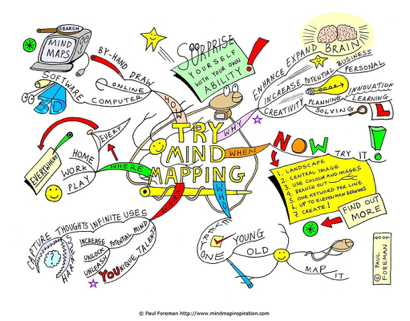Note-Taking: Handwrite or Type?
The Fall semester has begun, triggering an increasingly consequential question for students given the availability of technological resources for note-taking:
To TYPE or HANDWRITE Academic Notes?
There is no right answer for every person and every context. What works for one person, may not work for another. And what works for one course or assignment, may not work for another. Knowing yourself in each situation and the requirements of each course and assignment is key.
Whether you’re working on your dissertation, studying for an exam, or considering a manual or digital method of note-taking, storage, and archiving, we caution you not to reinvent the wheel, if a particular method already works well for you.
That said, if you’re still deciding between handwriting or typing notes, weighing mainly a factor of speed optimization, consider Baer (2014), “By slowing down the process of taking notes, you accelerate learning“.
Wait a minute! Slow down to accelerate???
Yes, it has to do with the brain! “When we write, a unique neural circuit is automatically activated” (Baer, 2014). You mean… there is something unique about the act of slowing down and writing that automatically activates neural circuits?
Actually, it’s a bit more nuanced than that. In fact, it is what the slowing down of time makes possible. What are the affordances of time? What can you do by stretching out time? Research suggests that the learner should do something active and stimulating–that is, the opposite of copying, typing, transcribing, and rote memorizing new information.
Baer (2014) suggests that by getting off of the keyboard, and note-taking by hand, “you’ll have to look for representative quotes, summarize concepts, and ask questions about what you don’t understand.”
So… What’s the verdict?
Is it Best to TYPE or HANDWRITE Academic Notes?
The answer is to do something new with the information, to APPLY or SYNTHESIZE it. This is an active and actionable method that the slowing down of time by note-taking can accommodate, if not require.
References:
Baer, D. Here’s why writing things out by hand makes you smarter. Business Insider. December 16, 2014.
By Staff Writer: Min Derry, Learning Fellow
Note-Taking: Take Better Notes, Relationship Between Time and Memory
Many students come to the Office of Learning Resources (OLR) at Weingarten (WLRC) looking for strategies and tips on how to take better notes.
While the jury is still out on whether handwritten or typed notes are better, what we do know is that what matters more than how you take notes is what you do after with your notes.
Even if you are a student who is prepared for class and takes incredibly detailed notes, within 1 day of class, our minds forget nearly 75% of what we learned:
- See the graph below for a visual representation of Time vs. Memory:

- If we don’t return to our notes until the week before the exam, we have already forgotten much of what we have learned. Instead of actually studying, we are stuck relearning the material.
- The good news is that there is a simple solution to make sure you retain much of what you have learned during class:
Actively review your notes within 24-36 hours of class!

- By taking the time to review notes for just 30 minutes within 24-36 hours of class, you can reinforce what you learned and prevent this memory loss.
- Make sure you are actively reviewing your notes (don’t just re-read or skim your notes, it’s too easy to just glaze over what you originally wrote).

Here are some tips for how to actively review your notes:
- Create an active recall study sheet:
- On a blank sheet of paper, spend 5 minutes writing down everything you can from class and your readings. Then go back to your notes to fill in the gaps)
- Annotate your notes in a different colored pen
- Synthesize your notes into a study guide or summary
- Use the Cornell method
- Create a Concept Map
- In a vocabulary-heavy class, create flashcards or a Quizlet
The hardest part of this strategy is actually fitting this review time into your schedule!
- I recommend making this a habit by scheduling time to review your notes from the last class before you start your reading for the next class or before you begin your related homework.
- Making this a routine will go a long way in improving your learning, strengthening your memory, and increasing your grades.
By Staff Writer: Kelcey Grogan, Learning Instructor
Classroom Participation: Making Contributions that Count
It has been known through surveys that the population fears public speaking more than death (Croston, 2012). How do we reconcile this when, in some cases, 15%-40% of your grade can depend on this category called “class participation”? Some classes are now being “flipped” in that the professor facilitates conversation and guides the classroom discussion. This style of instruction is so that students can learn from each other instead of blankly and passively receiving knowledge from a teacher. Here are some simple strategies that may alleviate the reluctance to participate in class.
Before Class:
- Be prepared: This means doing the readings and familiarizing yourself with the syllabus and course materials. Each week there usually is a theme or concept being covered in class, so make sure to engage with that topic through the readings and assignments.
- Make notes: during the readings or homework, try to explicitly make connections and link the main ideas of the week. Write down anything you found interesting enough to react to, agree with, disagree with, or have questions about.
During Class:
- Engage in the Discussion: get involved when someone asks a question, or ask a question yourself, or provide a comment. If you’re really nervous, try to say something at the beginning of class so you don’t get more anxious as time passes.
- Make your comments brief and to the point. It’s better to be clear than attempt to sound “smart” by being long-winded.
- Direct your comments to the class instead of a particular individual. Democratic discussions aren’t about attacking individuals, but rather collectively interrogating ideas.
- Jot down notes during the discussion, that way you can relate to what is being said and organize your thoughts and comments accordingly. You may even use those notes for an exam or paper later in the semester, or even perhaps continue the conversation with the professor or TA in office hours.
Sources:
Classroom participation tips adapted from K. T. McWhorter (1986) College Reading and Study Skills.
Croston, G. (2012). The thing we fear more than death. Retrieved from https://www.psychologytoday.com/blog/the-real-story-risk/201211/the-thing-we-fear-more-death.
Staff Writer: Victoria Gill
